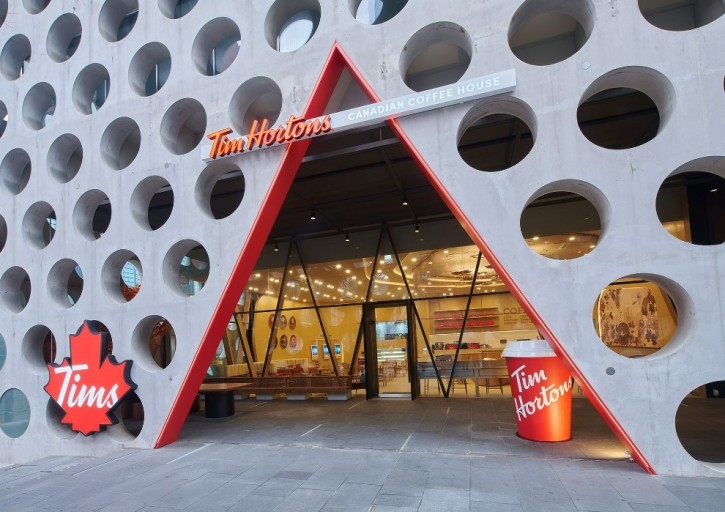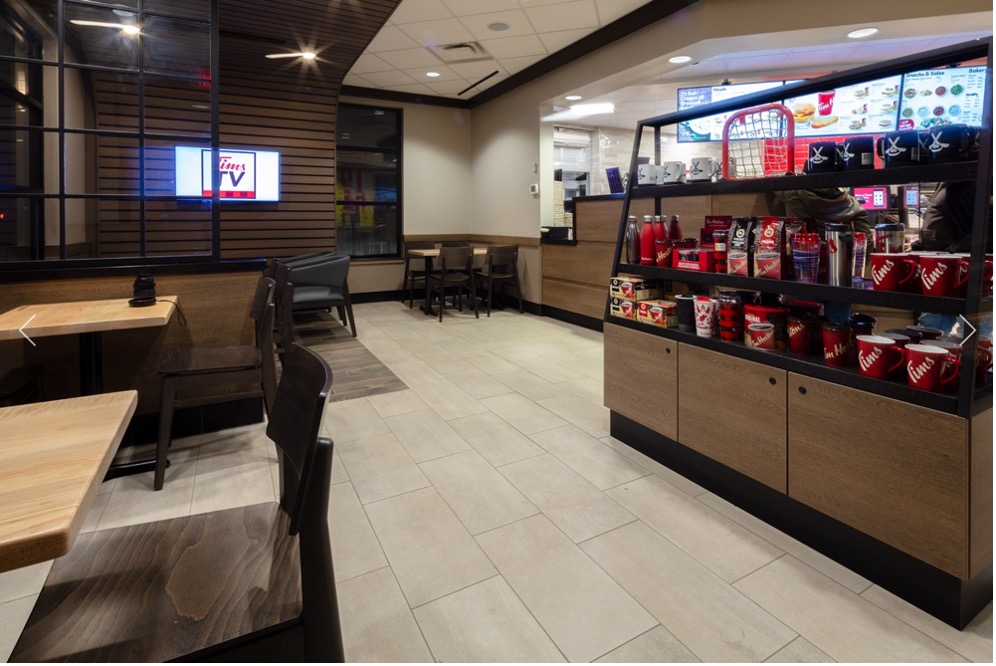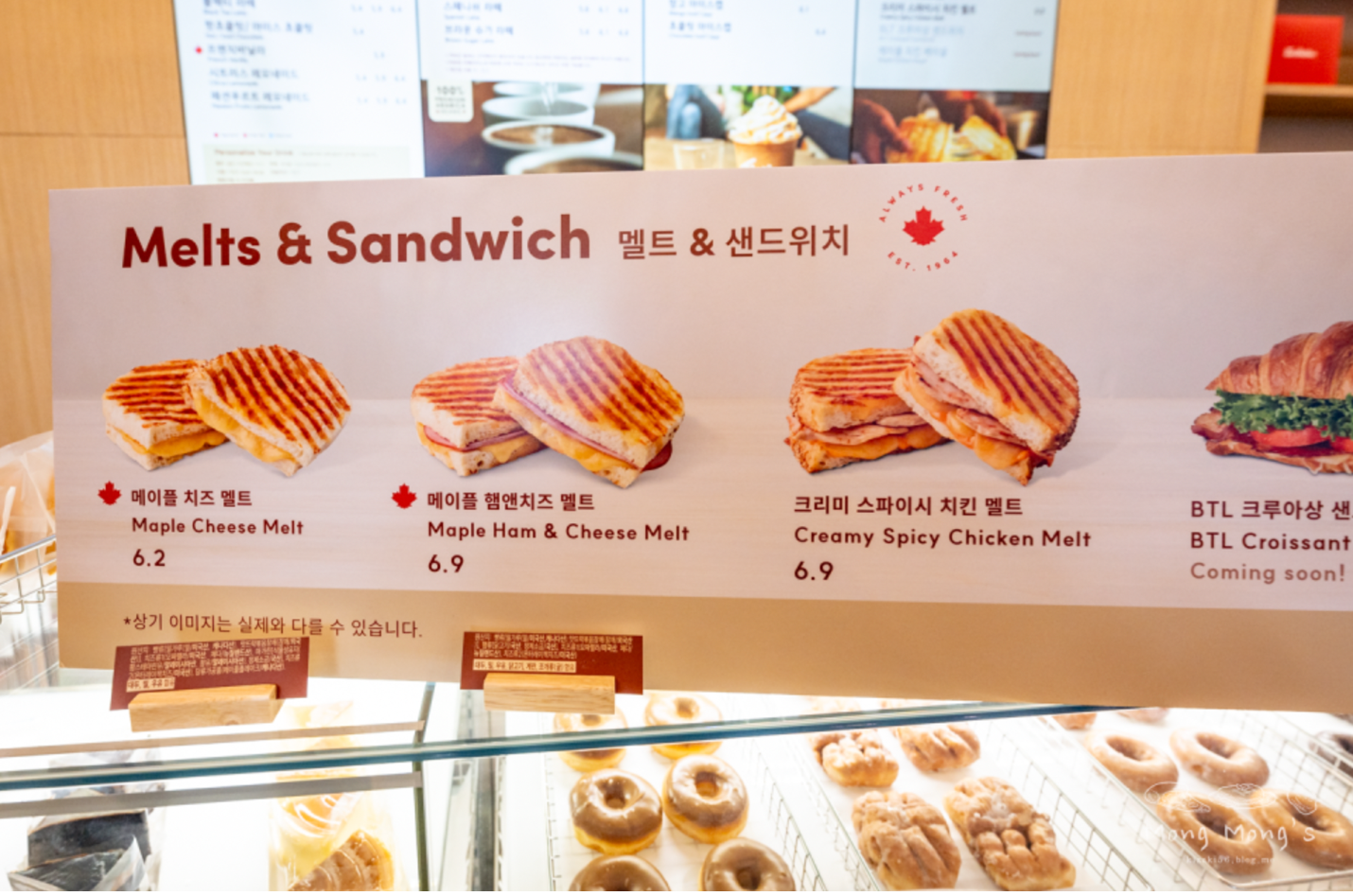Tim Hortons’ entry into South Korea has made headlines, as the iconic Canadian coffee chain has opened two locations in the upscale Gangnam district.
Tim Hortons, a budget-friendly Canadian coffee chain, is well-known for its affordable coffee and extensive menu range. Some of its classic menu items include its Original Blend Coffee, “Double-Double” coffees (consisting of double shots of cream and sugar in their original blend), and the iconic “Timbit” donuts.
Read our Korea’s MZ Generation report

Founded in 1964 in Hamilton, Ontario, the chain has become a symbol of Canada’s coffee culture. With over 5,700 stores in 17 countries, Tim Hortons announced its entry into South Korea in May 2023, marking its seventh venture into the Asian market after the Philippines, China, Singapore, and others.
In Korea, the Canadian coffee chain plans to open over 150 locations within the next five years between 2023 and 2028. Its grand opening in Seoul has garnered major news headlines, with social media posts claiming waiting lines ranging from 30 minutes to 2 hours.
Tim Hortons Korea shifts from budget to premium brand image
Tim Hortons is entering the saturated South Korean coffee market positioning itself as a premium brand. Amid the bustling Korean coffee market where there are over 100,000 stores and over 800 different brands, it is departing from the budget-friendly approach adopted by the local players like Ediya Coffee and Mega Coffee. Instead, it is positioning itself as a premium brand, competing against other coffee brands like Starbucks and A Twosome Place.
The Canadian coffee brand opened its first location in South Korea near Sinnonhyeon station, located in Seoul’s upscale Gangnam district on December 14th 2023. Tim Hortons has also launched its second location near Seollung Station, also in the Gangnam district. Notably, Tim Hortons is charging consumers KRW 5,100 (CAD 3.90) in Korea for its trademark Original Ice Capp, a contrast to the CAD 2.65 it sells for in Canada.

Entry of “Canadianness” into the South Korean market
To promote Tim Hortons’ unique Canadian brand image to the Korean market, the coffee chain focused on incorporating Canadian maple leaf elements into the stores’ interior designs and menus. Its flagship store in Sinnonhyeon features a fake maple tree, and the interior incorporates maple leaf designs. It also offers a variety of maple-themed menu items, such as the “Maple latte” and three different “Melt” sandwiches including the Maple Cheese Melt, Maple Ham & Cheese Melt, and Creamy Spicy Chicken Melt sandwiches. This is very different from the typical interior of a Tim Hortons location in Canada, where the coffee chain features a more basic design intended for a quick coffee stop for Canadians.


Adjusting to South Korean consumer preferences: fewer sweet coffees and more maple-themed items
In an effort to tailor its offerings to the discerning South Korean palate, Tim Hortons Korea has introduced innovative menu adjustments. Instead of offering the regular cheese melt, Tim Hortons Korea has developed a Maple Spread to cater to South Korean preferences, aiming to create balance between sweet and salty flavors.
The iconic Tim Hortons Iced Capp’s flavour was also reportedly altered to match South Korean taste preferences, as Canadians compared the South Korean drink to the original Canadian version.
Providing insight into the culinary adaptation, Tim Hortons Korea’s chief brand officer said in an interview that due to South Korean’s preferences for cream in their coffee, the Maple Latte incorporates cream to cater to local preferences.

Mixed reception in South Korea: overcharging and long wait times
The mixed reception of Tim Hortons’ entry into South Korea leaves the future for the brand’s survival within South Korea’s coffee landscape uncertain.
Consumer negative response: overcharging and long wait times
Many South Koreans were taken aback by the upcharge of the beloved Canadian budget coffee brand. This has led them to ponder the broader question as to why Western brands become more expensive upon entering South Korea. A Korean who has studied abroad in Canada during her early teen years worries how the beloved Tim Hortons will fit into the South Korean coffee landscape between competitors such as Dunkin Donuts and Mega Coffee with its new premium branding.
More specifically, online netizens compared Tim Hortons’ donuts to Dunkin Donuts, noting similarities or even perceiving Tim Hortons’ quality as lower.
Meanwhile, the experience of waiting in long lines drew mixed responses. Some users accepted the wait, while others questioned the necessity of waiting for a brand equivalent to Korea’s budget coffee chain Mega Coffee.
Positive spotlight amid mixed reviews
Amid the mixed reviews, a notable positive response emerged. Many were excited about the opening of the top Canadian coffee shop, appreciating the incorporation of Canadian elements into the interior design for a unique experience reminiscent of being in Canada.
The coffee shop’s popularity attracted trend-sensitive individuals in Korea. A Naver Blog user highlighted the store’s opening as super busy, noting the dedication of people waiting in line during negative eight-degree weather.
Additionally, some netizens praised the coffees, particularly the French Vanilla Latte and Maple Latte, describing them as delicious.
What Tim Hortons is doing to achieve a premium positioning in the South Korean coffee market
- The Canadian coffee chain, with a history dating back to 1964, has expanded to 17 countries and plans to establish over 150 locations in South Korea within the next five years (2024-2028).
- Tim Hortons Korea aims to stand out in a saturated market of 100,000 stores by positioning itself as a premium imported brand in South Korea.
- Tim Hortons’ entry into South Korea strategically aims to reshape the local coffee industry, with a premium approach, strategic locations, and localized offerings.
- Shifting from a budget to a premium brand image, Tim Hortons opens its first location in Gangnam, pricing its products nearly double compared to Canada.
- Adapting to South Korean preferences, Tim Hortons introduces maple-themed items and adjusts flavors to align with local tastes.
- Despite Tim Hortons positioning itself as a premium brand, questions arise about justifying its premium status compared to its budget-friendly image in Canada. The discrepancy between perceived premium positioning and more affordable competitors like Mega Coffee and Dunkin Donuts prompts consumers to seek further justification for this premium branding.





